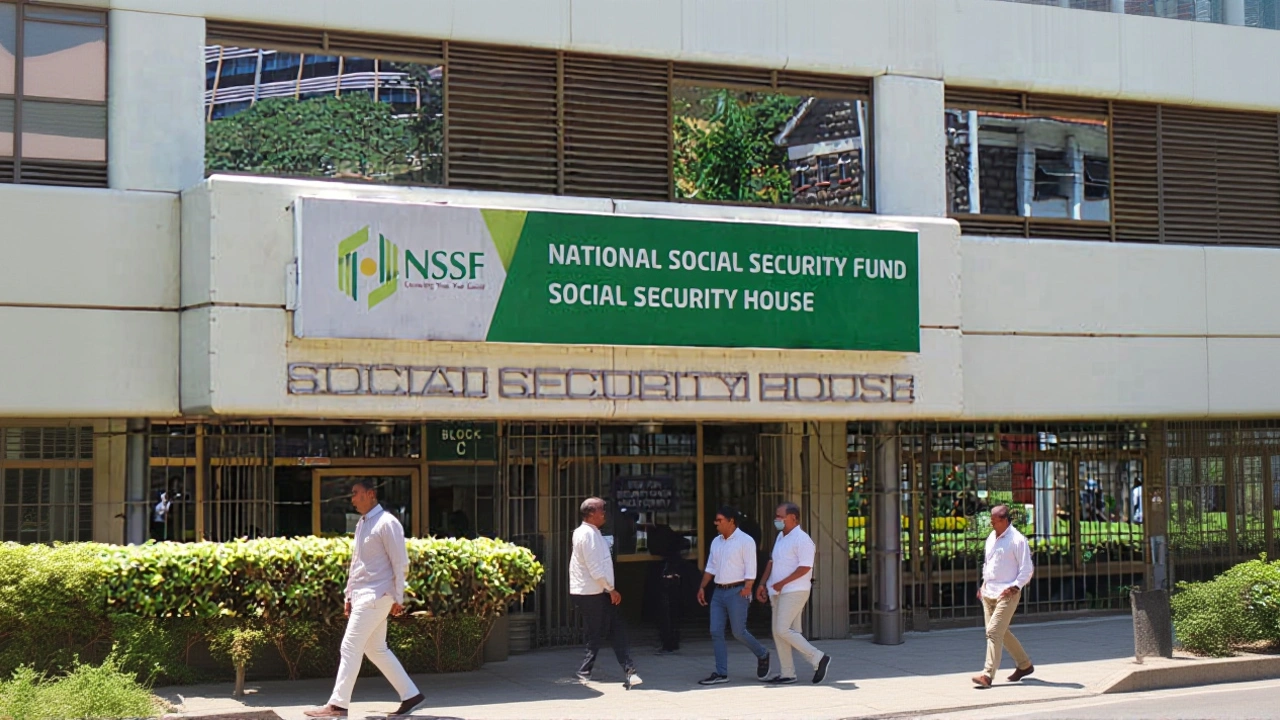Sh2 Billion – What the Figure Reveals About Kenya’s Pension Landscape
When you hear Sh2 Billion, a financial amount equal to two billion South African Rand that appears in Kenyan audit reports. It’s also called Sh2bn.
That number isn’t just a stat on a spreadsheet – it’s a red flag that points to deeper issues in the country’s pension system. The recent audit by the Auditor General, the independent office that checks public finances for accuracy and legality highlighted how the National Social Security Fund (NSSF) suffered massive setbacks, with risky bond trades and a mysterious Sh2 million reception desk chewing into resources. In short, Sh2 billion signals that something went wrong, and the fallout touches investors, retirees, and policymakers alike.
Key Players in the Sh2 Billion Story
The NSSF, Kenya’s biggest pension fund, managing contributions from millions of workers sits at the center of the controversy. Its portfolio, once prized for solid returns, now shows Sh16 bn in losses tied to speculative bond trades. Those bonds, meant to be low‑risk government securities, turned sour when market volatility spiked, wiping out expected earnings. Meanwhile, the Auditor General office flagged a Sh2 million front‑desk expense that appeared in the NSSF’s financial statements, raising questions about governance and oversight.
Why does this matter for the average Kenyan? The pension fund’s health determines the size of future payouts. When the NSSF records a Sh2 billion shortfall, retirees could see lower monthly benefits, and younger contributors might face higher contribution rates to make up the gap. The audit also shines a light on the broader issue of **bond losses** in emerging markets, where even seemingly safe assets can become risky under certain economic pressures.
Another related entity is the **Kenyan pension system** as a whole. It includes private pension schemes, the Employees’ Provident Fund, and other state‑run entities. Each relies on sound investment strategies and transparent reporting. The Sh2 billion figure serves as a cautionary example for these bodies, urging tighter risk‑management policies and stronger internal controls.
From a policy perspective, the audit’s findings push the government to consider reforms. Options include tighter limits on high‑risk bond exposure, mandatory third‑party reviews of large expenses, and clearer accountability lines for fund managers. The Auditor General’s report also recommends improved training for NSSF staff to better assess market risks before committing large sums to volatile securities.
On the ground, civil society groups are already reacting. Advocacy organizations call for a public hearing on the audit results, demanding that the NSSF’s leadership be held accountable. Some suggest setting up an independent watchdog to monitor future bond investments and prevent another Sh2 billion slip‑up.
For investors, the take‑away is simple: scrutinize the risk profile of pension fund assets before committing capital. The Sh2 billion episode shows that even large, seemingly stable funds can suffer steep losses if due diligence lapses. It also underscores the importance of regular, transparent audits to catch problems early.
Below, you’ll find a curated set of articles that dive deeper into each aspect of this saga – from the detailed audit findings and NSSF’s response, to expert analysis of bond market volatility in Kenya. Whether you’re a pension contributor, a financial professional, or just someone curious about how big numbers like Sh2 billion affect everyday lives, the stories ahead will give you the context you need.
Kenyan Parliament Calls CMA to Account Over NSSF’s Sh2 bn Loss
Kenya’s parliament summons the CMA over ignored alerts about NSSF bond trades that may have cost pensioners up to Sh2 billion, sparking calls for regulator accountability.
READ MORE
